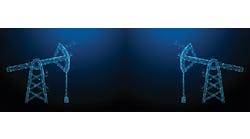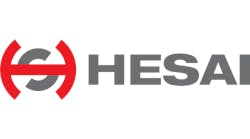Maintenance and reliability professionals are familiar with the hierarchy of corrective (breakdown), preventive (time- or use-based) and predictive maintenance, and know the best way – really the only way -- to maintain high-value and critical equipment is to monitor its condition to predict incipient failures, then take action so those failures never occur.
But not every plant can provide on-site expertise for predictive technologies, or has the ability to apply today’s data analytics to maximize their potential
So Rockwell Automation has stepped up and made available Remote Monitoring and Analytics Services, “a scalable solution that has predictive capabilities, to help plants prevent failures and keep equipment running as long and continuously as possible,” said Phil Bush, product manager, remote monitoring and analytical services, Rockwell Automation, to attendees of the session, “Predictive Maintenance: No Time for Downtime,” co-presented with Amanda Krasowski, product specialist, Rockwell Automation, this week at Rockwell Automation TechED in Orlando, Fla.
[sidebar id =1]
The service works by connecting asset data and information in existing databases with analytics and engineering teams. “Seventy-four percent of the cost of downtime is associated with the time it takes to figure out what the issue is and how to fix it,” Bush said. “We bring that information into the process as early as possible to minimize the cost and downtime.”
Remote Monitoring and Analytics Services are designed to help plants:
- Maximize the usage of automation assets by limiting downtime
- Optimize asset performance within applications
- Reduce breadth of knowledge required of on-site maintenance
- Shorten/eliminate time between issue identification and resolution
- Move from preventive maintenance to prescribed
- Scale maintenance and performance activities as technology changes.
It works with any kind of connected asset. “It’s agnostic,” Bush said. “We’re not just talking about Rockwell Automation assets, but about any kind of asset where we can capture data and build on it using our neural network, machine learning and predictive algorithms. It’s best to start with historical data to build the models. If it doesn’t exist, that’s fine, but it will take more time to develop predictive algorithms.”
Cloud connectivity
Before describing how the analytics work, Bush emphasized that assets must be connected to the cloud to provide data for remote analysis. That’s not an issue thanks to the company’s constantly more comprehensive connected services architecture. “The cloud-enabled service architecture facilitates data collection with gateway hardware and FactoryTalk Cloud, and connects it to technical expertise,” said Krasowski. “It connects critical assets as well as cloud-enabled devices such as Rockwell Automation intelligent motor control (IMC) drives and third-party devices.”
It uses EtherNet/IP to a gateway that has secure socket layer (SSL) encryption and initiates one-way communication to the FactoryTalk Cloud via cellular or through a corporate firewall. “There’s no VPN to configure or maintain,” Krasowski said. From the cloud, data can be accessed for predictive analytics.
The FactoryTalk Cloud is powered by Microsoft Azure, Krasowski said. “Azure’s abilities and security are well known.”
Services explained
With Remote Monitoring and Analytics Services, “We’re delivering three core components: data analytics, workflow automation and technical support,” said Bush. Data analytics bring software technology and machine learning technology that traditionally was only available on-site into the cloud.
“Workflow automation turns predictions into actions, by cutting a work order directly to your computerized maintenance management system (CMMS) to perform the work we’ve determined is required,” Bush said.
For technical support, “We have engineers who understand the applications and the predictive learning environment,” Bush said. “They determine which approaches have the most value, and are on the system 24/7 supporting you remotely. If you discover a new failure mode, they’ll work with you to understand and predict it.”
To determine eligible assets, “Focus first on high-value, high-cost-of-downtime and critical equipment. Over time, move lower down,” Bush said.
Candidate equipment must be connected and have an associated set of data, preferably with a history. “Sensor data such as temperatures, pressures, voltages, humidity, vibration, etc. are the essential building blocks,” he said. “We like at least six months of data, a year is better, but we can do it with less or none. We marry this data to the maintenance records to find correlations and build predictions. If we have root cause analysis, we can tell what actions to take based on the predicted failures.”
The approach delivers value much faster than most predictive initiatives, Bush said, “In weeks, not years.”
Analytics and agents
The analytics focus on identifying data patterns and creating “agents” to recognize them in real time. “An agent is a little block of code that looks for a specific pattern in the data and recognizes it as an indication that something needs attention,” Bush said.
For example, an agent could recognize that the pressure drop across a filter is increasing, and trigger a work order: “Sometime in the next four weeks, when the machine is down, change the oil filter.”
To create an agent, “We look at all the data and determine what is normal and what is not,” Bush said. “An abnormal pattern that we can associate with a failure is a failure agent.” An anomaly agent notifies on anything that’s abnormal.
“We deploy both failure and anomaly agents, so for example, on a machine that has 10 failure modes, we deploy 11 agents,” Bush said.
The failure agents recognize known failure patterns so plants can take action before failure occurs. An anomaly alert requests an inspection. “If the cause is normal, we retrain the anomaly agent. If it’s a new failure mode, we recognize a new failure pattern and build a failure agent for it. Then we try to refine the analysis to predict it earlier and prevent the failure.
“If you have a fleet of assets of the same type, if you find a pattern and train an agent on one of them, you can then deploy the agent across the entire fleet.”
Bush added that Remote Monitoring and Analytics Services are currently in pilot, and will become a standard offering in six months.




